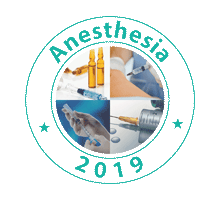Edoardo Raposio
University of Parma, Italy Tor Vergata University of Rome, Italy
Title: 7 years’ experience in migraine surgery with minimally invasive and endoscopic technique
Biography
Biography: Edoardo Raposio
Abstract
Statement of the Problem: Migraine Headache (MH) is a very common disorder affecting 1.7-4% of the world’s adult population. The first line therapy for these patients is usually a combination of conservative treatments. Despite this large variety of options available, some patients remain refractory. For such group, migraine surgery might offer a definitive solution for their medical condition. In these patients, migraine is usually caused by extracranial nerve compression due vascular, fascial or muscular structures nearby. The aim of migraine surgery is to relieve such compression at specific trigger points located in the occipital, temporal and frontal regions.
Methodology & Theoretical Orientation: From 2011, in our plastic surgery unit at the University of Parma, Italy, we performed 235 surgical procedures for migraine in patients suffering from either frontal, occipital or temporal headache. In patients with occipital and temporal migraine, nerve decompression was achieved by occipital and superficial temporal artery ligation, respectively. Vessels were previously localized by mean of portable doppler device. In patients suffering from frontal headache, we performed nerve decompression with single-entry endoscopic myotomies of procerus, corrugator and depressor supercilii muscles.
Findings: Among patient suffering from occipital migraine, 95% of them observed significant improvement of their condition, with 86% reporting complete relief. In temporal migraine, positive outcome was achieved in 83% of the patient’s m50% complete elimination and 33% partial improvement. In patient treated with endoscopic frontal myotomies, positive results were observed in 94% of the patients 32% complete elimination and 62% partial improvement.
Conclusion & Significance: Migraine is a common and debilitating condition that can be treated successfully with minimally invasive surgical procedures. Our results suggest that vascular compression is the main causative agent in occipital and temporal migraine.

